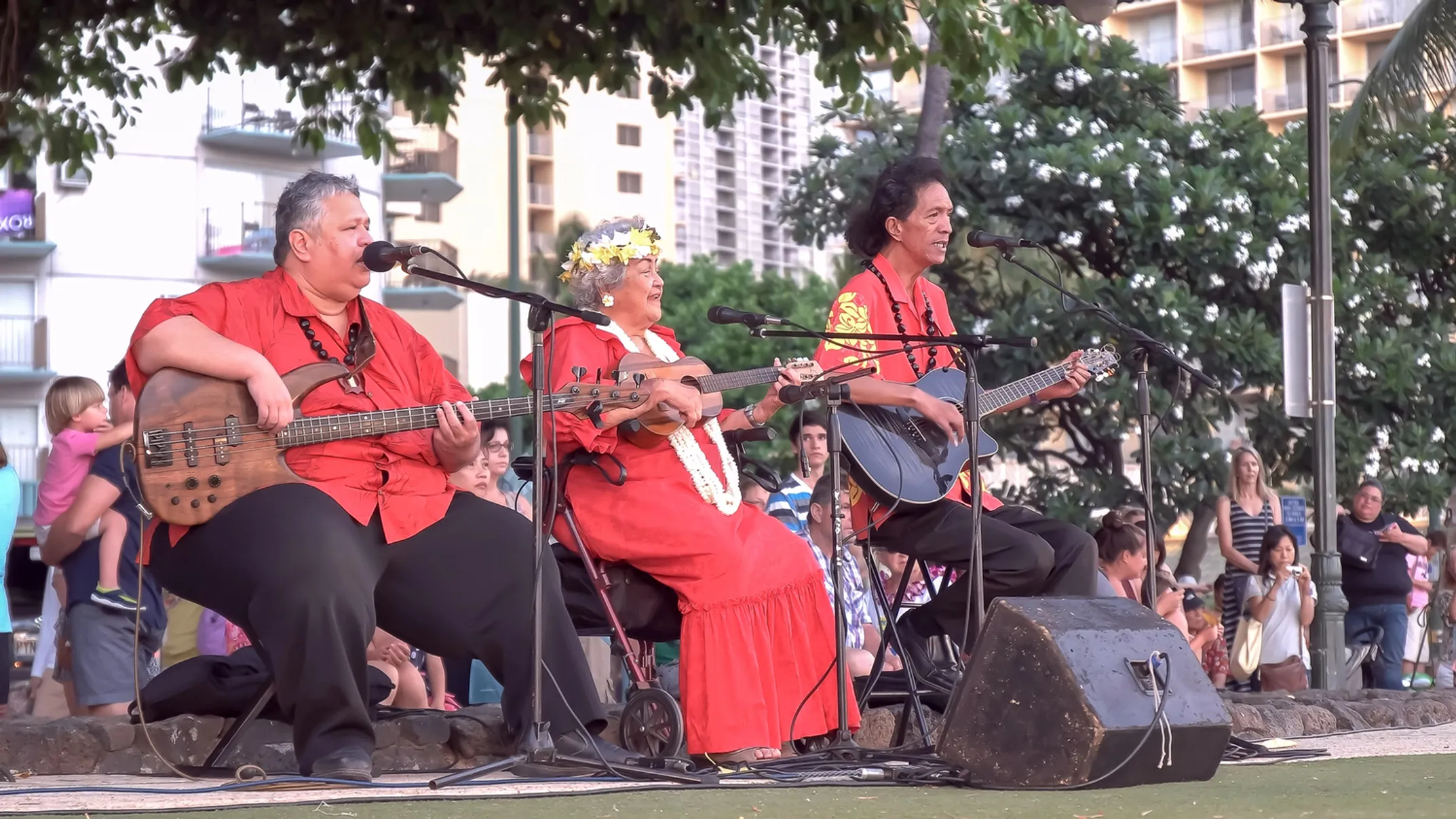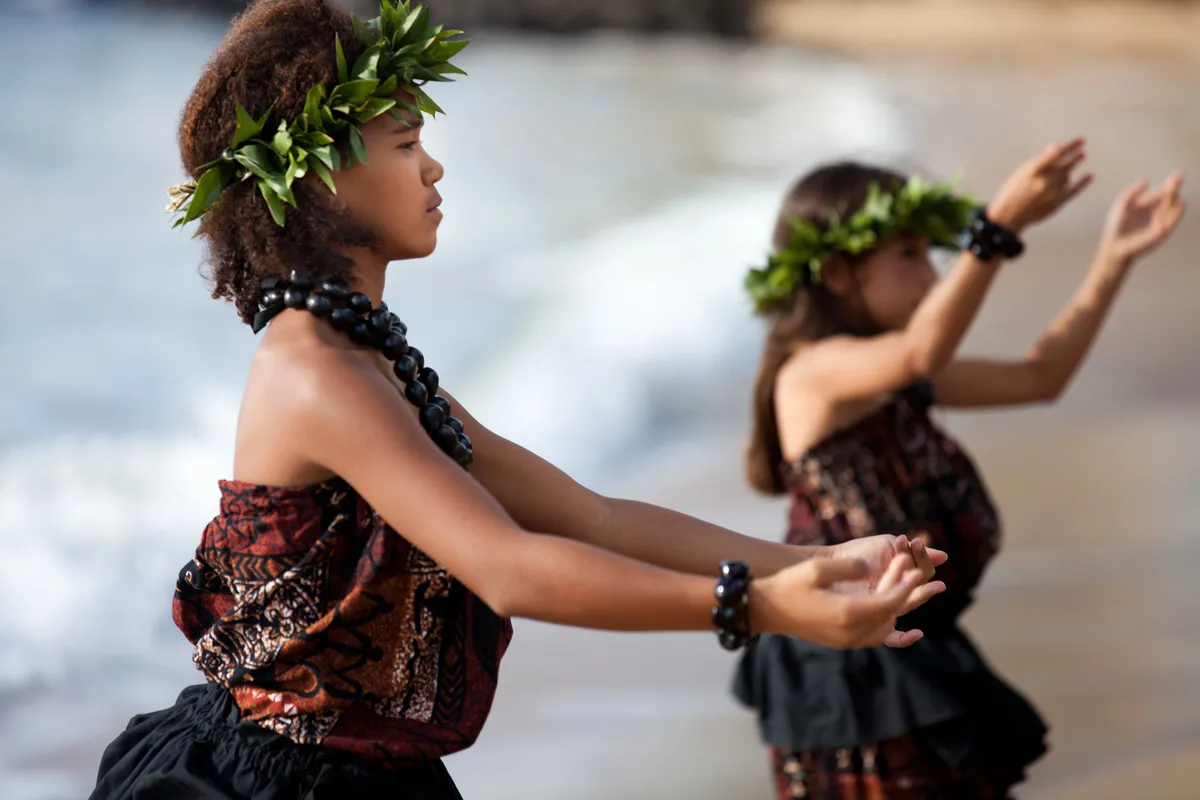

The Unbroken Voice
A Definitive Guide to Hawaiian Chant (Oli)

Written by a Cultural Practitioner
Kalani MillerPart I: The Sacred Science of Sound
When Breath Becomes Prayer
The mist still clung to the valley walls of Hanalei when my kumu first taught me to chant. I was thirty-two years old and felt like a fraud. Here I was, born and raised on Kauaʻi, yet I could barely string together a proper sentence in my own people's language.
"Breathe from here," Kumu Leilani pressed her hand to my belly. "Let the voice come from the center, not the throat."
I took that first controlled breath, feeling air fill spaces I never knew existed. Then came the haʻi—that controlled break in the voice that makes oli sound so different from Western singing. As my voice cracked on that first note, something ancient stirred in my chest.
"E ala ē ka lā i kahikina," I chanted, calling to the sun rising in the east. The words felt foreign on my tongue, yet they resonated in my bones like an old friend returning home.
That morning changed everything. The oli didn't just teach me to chant. It taught me that my voice had been there all along, waiting.
This experience connects to something our kūpuna understood completely: the power of the spoken word. The ancient proverb states it clearly: "I ka ʻōlelo ke ola, i ka ʻōlelo ka make"—In the word is life, in the word is death. This isn't poetry. It's fact.
In Hawaiian thought, words carry real force. They can heal, bless, grow, or curse. The oli, our traditional chant, is the most refined way to channel this sacred energy—what we call mana i ka leo, power in the voice.
An oli is technically a chant that stands alone, without dance. Usually one person chants it, delivering each long phrase on a single breath. This separates it from mele hula, which are chants made specifically for dance. The purpose of oli is to transmit manaʻo—the thought, meaning, and significance—of a person, place, deity, or important event. By chanting, we honor these things and bring them into being.

While oli stands alone without dance, it shares deep spiritual connections with mele hula, the chants that accompany traditional Hawaiian dance.
Vibrational Cartography: The World-Shaping Power of Oli
Calling oli just "song" or "poetry" misses its true function. It's sophisticated indigenous technology. It's a tool for moving through physical and spiritual worlds, for marking boundaries, giving thanks, and gathering strength.
In ancient Hawaiʻi, the protocol was strict. When voyagers approached new land in their canoe, they chanted an oli from the water. This wasn't just a greeting. It was formal declaration of their identity, their genealogy, and their plans. From shore, a chanter representing that land's people would offer an oli in response, either granting or denying permission to land.
This exchange was basic diplomacy and spiritual negotiation. It established relationship before a single foot touched sand.
🌺 Understanding Kaona
Central to this technology is kaona—layered, hidden meaning woven into chant words. The surface text is just the first layer of complex structure. One oli might hold three, four, or five different meanings.
The most touching example of kaona comes from Queen Liliʻuokalani's imprisonment in ʻIolani Palace. Her loyal supporters brought her gifts of flowers wrapped in newspaper. The open gesture was offering aloha. The kaona, the hidden meaning, was delivering the newspaper itself, keeping the queen informed about events in her stolen kingdom.
This understanding of oli as identity declaration and environmental negotiation reveals a profound worldview. Chanting when entering new space—forest, home, or island—is required. To enter unannounced is mahaʻoi, rude and presumptuous, a violation of that place's mana. The oli becomes vibrational alignment, a way of matching your personal mana with the location's spiritual energy.
It's negotiation of relationship, declaration of peaceful intent, and ritual that transforms anonymous space into place of recognized, mutual interaction. This isn't just greeting. It's spiritual cartography, mapping your proper place in the cosmos and establishing relationship built on respect.
Divine Frequencies: Chants that Invoke Pele and Laka
The oli directly connects us to the akua, the divine forces and deities of Hawaiian belief. Two of the most important are Pele, goddess of the volcano, and Laka, goddess of hula and forest growth.
🌋 Pele - Goddess of the Volcano
Pele embodies raw, geologic power that creates the land itself. Her energy is primal, fiery, and transformative. Chants dedicated to Pele speak to this elemental force, describing her epic journey from eastern lands, her power to stir and ignite rocks, and the awesome spectacle of eruption. A vast cycle of chants and hula also documents the journey of her beloved younger sister, Hiʻiakaikapoliopele, whose story intertwines with Pele's passion and power. To chant for Pele is to acknowledge the awesome, creative, and often destructive power that forms Hawaiʻi's foundation.
🌿 Laka - Goddess of Hula
If Pele creates the land, Laka adorns it with life. Laka is the goddess of hula and personification of the forest's regenerative energy. A hula practitioner doesn't simply dance for Laka. They pray for her to hoʻoulu them, to fill them with her spirit so that it's Laka herself dancing through the dancer. Her kinolau, or physical forms, are forest plants—fragrant maile vine, sacred lama wood, hardy ʻaʻaliʻi—which are gathered with great protocol and used to adorn both dancer and kuahu altar. Chants to Laka are prayers for inspiration, abundance, flourishing arts, and life's continuation.
Together, Pele and Laka represent profound cosmological duality. Pele provides the canvas—raw, volcanic landmass born of fire and pressure. Laka provides the paint—verdant life, fragrant flowers, and inspired arts that flourish on that foundation. Chanting to both Pele and Laka lets practitioners engage with the complete cycle of Hawaiian creation. It's deep acknowledgment of the islands' fiery origins and the subsequent blossoming of culture and life that makes them sacred. Oli is the medium through which Kānaka Maoli continue participating in this ongoing creation story.
Explore the Sacred Art of Oli
Journey through the complete guide to Hawaiian chant - from ancient protocols to modern practice
ℹ️ Quick Info
- Hawaiian Name: Oli
- Type: Sacred Chant
- Origin: Ancient Polynesia
- Purpose: Spiritual/Cultural
- Language: ʻŌlelo Hawaiʻi
🎵 Key Concepts
- Haʻi: Controlled voice break
- Kaona: Hidden meaning
- Mana: Spiritual power
- Kumu: Teacher/source
🎤 Types of Chant
Chant of calling/requesting
Chant of entering/welcoming
Chant of gratitude
Chant of greeting/love

